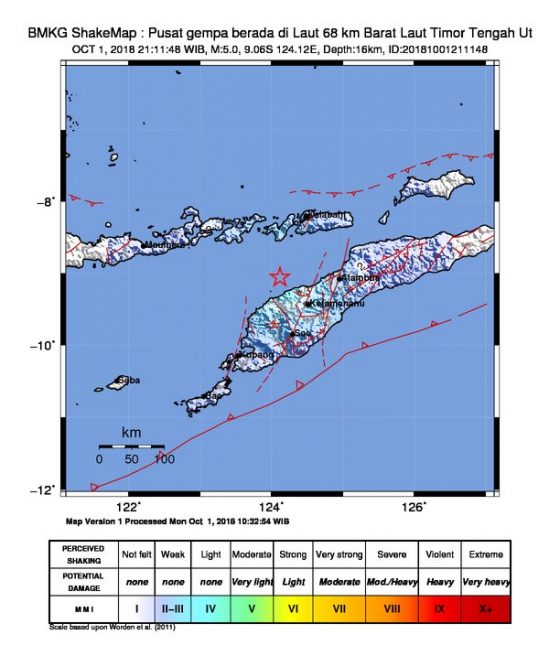California governor Gavin Newsom announced a new state-wide system, created in cooperation with the U.S. Geological Survey, that will provide California residents with an early warning for coming earthquakes. Part of the system is an emergency messaging system that sends text warnings, similar to those that cell phone users already get for floods and missing persons. The other component of the system is a new app called MyShake, which will give people “tens of seconds” advance notice before a quake strikes. If you are in a house, that might be enough time to get to a safe spot away from falling furniture.
If you are on the road, it may be enough time to pull off the road or stop before a bridge or tunnel.
According to the California Governor’s Office of Emergency Services, “The system uses ground motion sensors from across the state to detect earthquakes before humans can feel them and will notify Californians so that they can ‘Drop, cover and hold on’ in advance of an earthquake.” A similar app called ShakeAlertLA was unveiled in January, but was only available to L.A. residents. Additionally, an early warning system had already been in place in California, but many believed that it was not sensitive enough. This summer, after two major earthquakes hit a desert area outside of Los Angeles the week of July 4th, L.A. residents complained that they had not received any warning because the quake’s distance from the city meant that it was strong enough to set off the sensors in Los Angeles.
Newsom announced the new system on the 30th anniversary of the Loma Prieta earthquake that hit San Francisco in 1989, killing 63 people and causing a reported $6 billion in 1989 dollars (more than $12 billion today) in property damage. A spokesperson for the Governor’s Office of Emergency Services said that if the new system had been in place at the time of Loma Prieta, residents would have gotten a warning 15 to 18 seconds before the earthquake hit.
Shortly after its release, two earthquakes in San Francisco tested the app and it was able to warn users within a median time of 2.1 seconds for the first quake and 1.
6 seconds for the second. Officials said that the app will improve as it is tested further, and will also be available in Spanish and other languages in the near future, allowing it to reach more California residents.
California has a 99.7% chance of a 6.7 magnitude earthquake or larger in the next 30 years, according to Dr. William Leith of the U.S. Department of the Interior’s U.S. Geological Survey. And while the new system could protect residents from bodily harm, the same cannot be said for their property.
According to a 2018 California Department of Insurance report, only 13% of state residents with homeowner’s insurance purchased earthquake coverage in 2017. The total for all Californians is likely lower, around 10%, leaving many vulnerable to high costs for repairing and rebuilding property.




